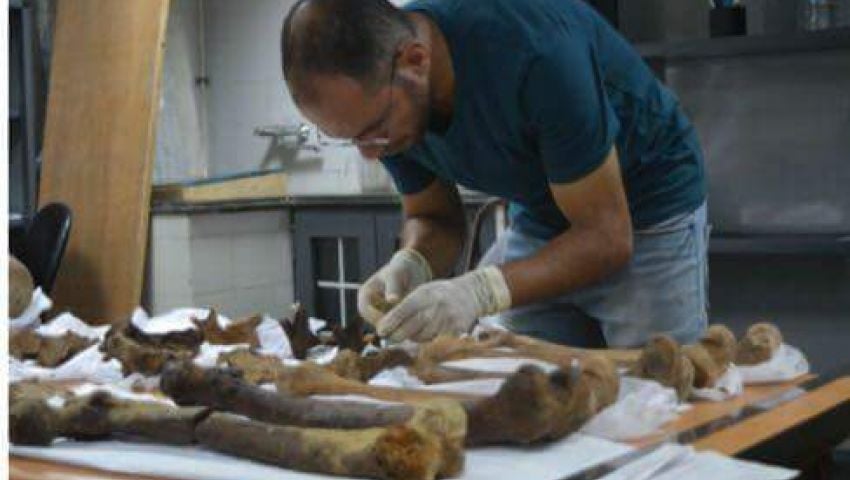
Scientists have solved the mystery of Egypt’s “Dark Sarcophagus,” and while it turned out that the mysterious coffin was not, in fact, holding the body of Alexander the Great, the newly discovered tomb had other surprising secrets to reveal.
The 2,000-year-old black granite sarcophagus sparked numerous far-fetched theories when it was discovered on a construction site in Alexandria last month. Did the massive nine-by-five-foot stone coffin contain some kind of super mummy? Would opening it release a deadly disease or trigger an ancient curse? Was this the long-sought final resting place of Alexander the Great?
The skull of one of three mummies found inside a recently discovered sarcophagus appears to have undergone trepanning, an ancient form of brain surgery. Photo courtesy of the Egyptian Ministry of Antiquities.
“We’ve opened it and, thank God, the world has not fallen into darkness,” Mostafa Waziri, secretary general of Egypt’s Supreme Council of Antiquities, told Reuters. Instead of a super mummy or Alexander the Great, Smithsonian magazine reports that the sarcophagus contained three bodies: a woman in her 20s, a man in his 30s, and a man in his 40s who has a hole in his skull that healed before he died, suggesting he had undergone trepanning, an ancient form of surgery.
Trepanation was believed to cure seizures, migraines, and mental illness. “This surgery is the oldest surgical intervention ever known since pre-history, but was rare in Egypt,” said Zeinab Hashish, director of the Department of Skeleton Remains Studies at the Egyptian Ministry of Antiquities, in a statement. Though it is impossible to know why the surgery was performed on this particular subject, it remains an important find.
The contents of a recently discovered sarcophagus some hoped held the remains of Alexander the Great. Photo courtesy of the Egyptian Ministry of Antiquities.
The coffin also held artifacts, including three miniature gold panels, engraved with drawings that appear to depict an opium pod, a stalk of grain, and a snake.
The coffin was also filled with a soupy red liquid, likely from sewage that had seeped in through a crack in the stone. Scientists are now analyzing the mixture, which likely contains the decomposed wrappings and remains of the mummies.
Gold panels were found inside a recently discovered sarcophagus. Photo courtesy of the Egyptian Ministry of Antiquities.
Some 32,000 brave souls have signed a tongue-in-cheek Change.org petition insisting that “we need to drink the red liquid from the cursed dark sarcophagus in the form of some sort of carbonated energy drink, so we can assume its powers and finally die.”
As researchers continue to examine the remains, they plan to run CT scans and DNA tests to determine if the three skeletons are related and laid to rest as part of a family burial. Initially, archaeologists had speculated that the occupants of the sarcophagus were soldiers, a theory that now seems unlikely given that one body belonged to a woman.